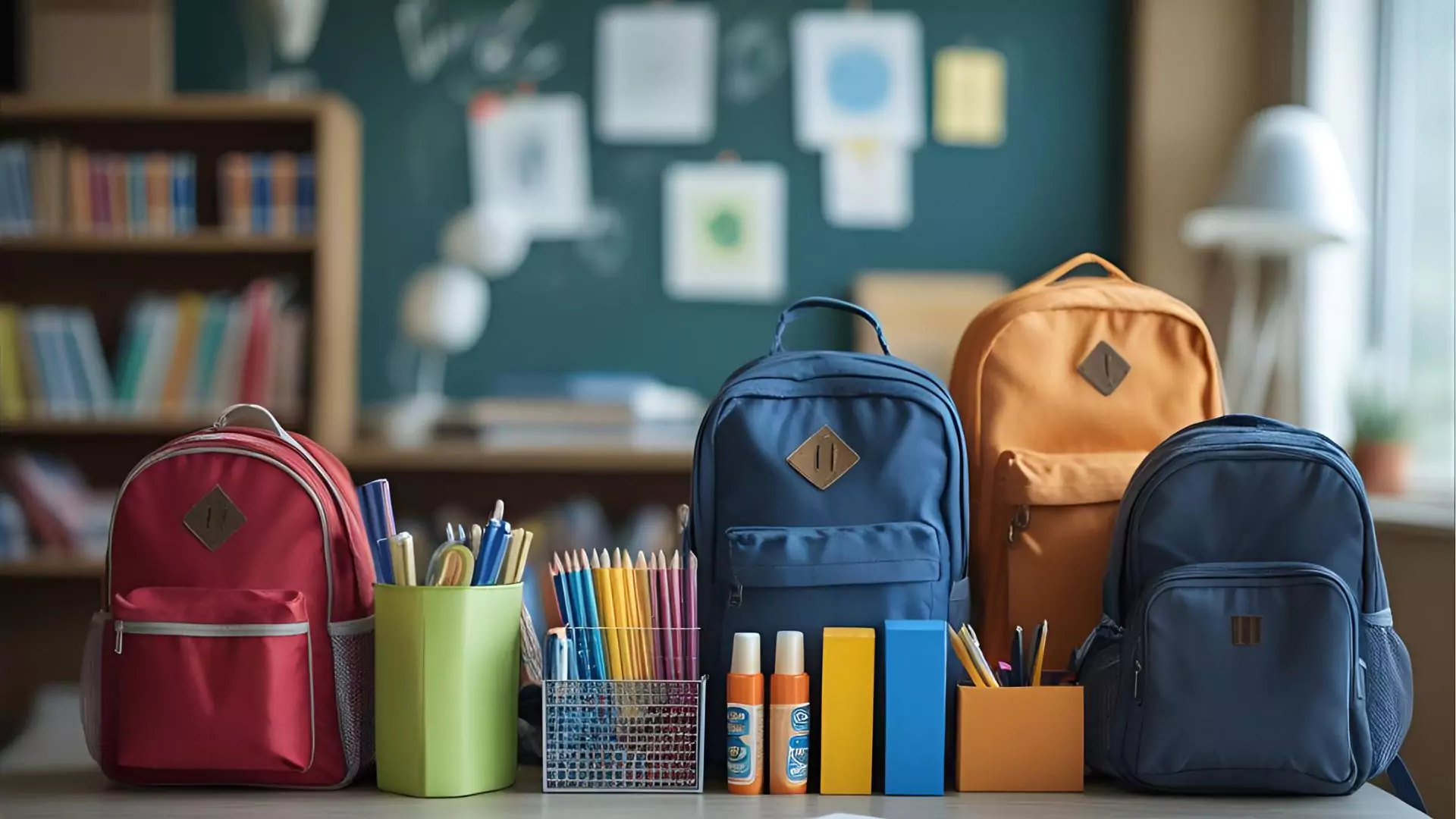For many families, the start of the school year brings more than just a return to routine: it represents a strain on the household budget. According to the National Retail Federation (NRF), parents of children from kindergarten through high school spent an average of $144 on supplies, including notebooks, pencils, tissues, and hand sanitizer.
When factoring in items like clothing, shoes, and electronics, this figure can reach $858 per child, creating a real impact at a time of high living costs and economic uncertainty.
Financial and Emotional Pressure
The search for the right school supplies, specific notebook sizes, and particular brands has become a topic of debate on social media and parenting podcasts.
Rachael Rayes, a speech therapist and mother of two in Kenner, Louisiana, summed up the feelings of many: “I dread it… I hate it more than matching socks,” she wrote about school shopping on the New Orleans Mom website. Finding every item can be a bit challenging — and there’s also the cost. Inflation had been easing, but it has recently risen again as tariffs began to impact prices.
More than half of consumers said they planned to spend less overall due to the tariffs, according to a consumer survey conducted by the financial and accounting consultancy KPMG.

Speaking Frankly About Costs
Chris Vehlow, a special education teacher in Pekin, Illinois, pointed out: “If you don’t have kids in school, you have no idea how expensive school supplies are.” At the same time, Haley Brown-Woods, a former teacher and now financial counselor, notes that many families are under pressure: “People are definitely feeling more financially stressed right now,” especially due to the numerous expenses that come with the return to school.
The Invisible Burden on Teachers
The weight of the list becomes even heavier when considering that many educators buy supplies out of their own pockets. Federal data from 2020–21 shows that 95% of public school teachers spent unreimbursed money — an average of $445 — to keep the classroom running. That expense, though partially tax-deductible (up to $300 per year), becomes significant for those earning about $47,000 annually, according to the National Education Association, the largest teachers’ union in the country.
Richard Ingersoll of the University of Pennsylvania emphasizes that this practice is long-standing — teachers assume the role of ensuring no student goes without the necessary materials. He recalls having to spend his own money on supplies as a high school teacher in the 1980s. This tradition may have stemmed from the culture of the U.S. education system, he said, which considers teachers ultimately responsible for success in the classroom.
Teachers are also under pressure as schools grapple with federal funding uncertainty. The Trump administration withheld billions in federal education funds — needed in part to recruit and train teachers for the upcoming school year — before releasing the money in late July, causing hardship in school districts as students returned to classrooms. (The school year had already begun in some southern states.)
What’s on a Typical Supply List Today
Technology has also raised the bar for supply lists: pencil cases, yellow chalk, specific notebooks, and even wired headphones are now required for students to use in laptop exercises. A 2025 list for elementary school in New York included 30 items, costing around $113 for just 16 essential school items, not including disposable items, which added up to $83.
A frequent topic on social media: the high usage of glue sticks, which are used in a variety of activities and have inspired memes mocking the seemingly absurd quantities needed.
“Eight!” says a bewildered father in a TikTok video, reading a supply list in his kitchen. “What’s he going to glue?” Teachers argue that the caps on glue sticks often get lost, causing them to dry out — hence the need for extras.
Strategies to Ease the Cost
Parents and experts offer a few practical tips to help with the back-to-school process:
Spread out the purchases over the year
Buy the most basic items first, while others can wait.
Swap name brands for generic alternatives
Crayola, for example, isn’t cheap — but generic items often get the job done more affordably.
Take advantage of tax-free school holidays
In over a dozen states, school-related purchases like supplies, clothes, and technology are tax-exempt for several days or weeks. All but five U.S. states impose a sales tax, which ranges from 4% to 7% of the purchase amount.
The savings may be modest since states often cap the eligible purchase amount. Connecticut, for instance, limits tax exemptions to clothing and footwear costing less than $100 per item.
New Jersey has revoked its tax holiday, but other states remain committed. Florida, for example, offers a full month of tax-free shopping in August.
A New Look at Priorities
The stress of these expenses opens the door to important conversations about education, household finances, and family priorities. In a country where families typically don’t have to buy textbooks or uniforms, school supplies still seem like a “hidden cost” in education — but a very real one in terms of financial impact.
With the educational and economic landscape constantly evolving, parents and teachers alike are rethinking resource allocation and looking for more collaborative, less burdensome solutions. For many, the key word is flexibility: adapting to real needs without compromising learning.
And you — have you thought about how to manage these expenses more consciously and strategically for your family?







